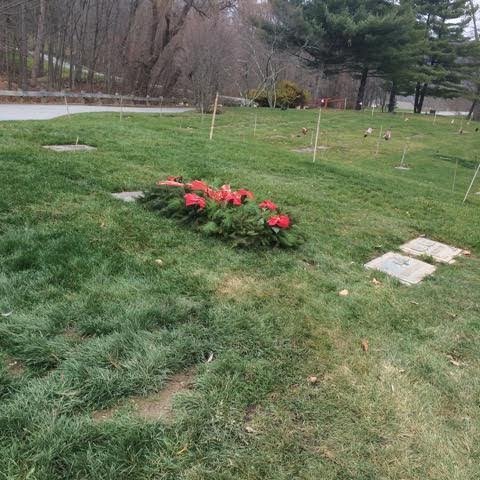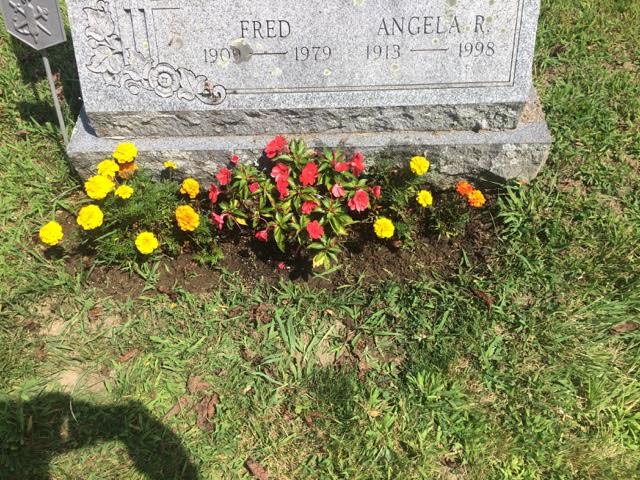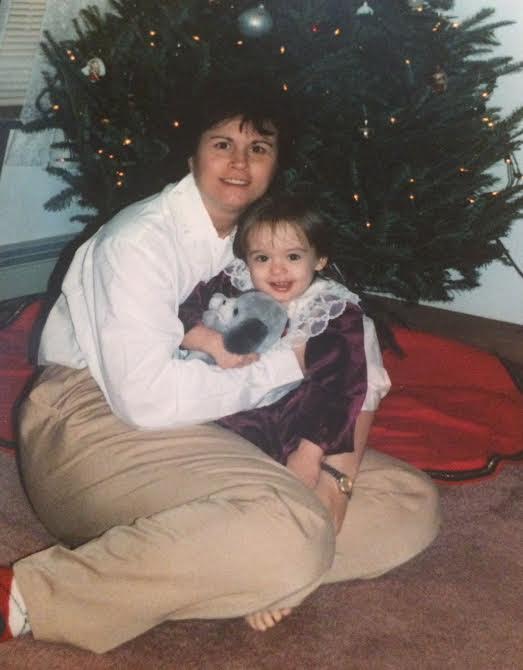 My mom is a simple woman. In her simplicity, there is a fearlessness that manifests itself as selflessness. She wants for nothing and instead gives all she has to others: her three kids, her family, her neighbors, the dead. Her name is Mary — though she prefers Mair, as she rebelled against her moniker’s religious roots growing up — and she’s a grave gardener in New York’s Hudson Valley. She’s a florist who cares for the graves of those who are no longer with us.
My mom is a simple woman. In her simplicity, there is a fearlessness that manifests itself as selflessness. She wants for nothing and instead gives all she has to others: her three kids, her family, her neighbors, the dead. Her name is Mary — though she prefers Mair, as she rebelled against her moniker’s religious roots growing up — and she’s a grave gardener in New York’s Hudson Valley. She’s a florist who cares for the graves of those who are no longer with us.
After giving life to me, my mom surrounded me with death. The cemetery was my day care, my pre- and post-school playground. It was there that I grew up, watching my mom tend to her clients and their places of rest. Amongst the gravestones and mausoleums, my spongy brain enveloped every answer my mom would give to my every question (and yes, there were a lot of them). I was her assistant, helping wash and tidy and plant blossoms, all while I grew to understand the culture and religion of death.
It is because of my grave gardener mom that I’ve grown to become a death-positive woman. I’m a woman who considers death a part of life. Yet, despite all she’s taught me, there are still details surrounding my mom’s profession that I’m unaware of — especially in relation to the rest of the death care industry. To find out more, I did what I’ve always done. I opened my eyes wide, looked up at my mom (I gave her a call; she still lives in New York, while I’m in L.A.), and asked her more.
Anna (A): How did you become a grave gardener?
Mair (M): I became a grave gardener in college, at the first flower shop I worked at. It was called Forget Me Not Florist. I put down grave blankets — which are blankets of evergreen and silk flowers that are meant to keep the dead warm during the winter — and I would also put wreaths on the gravestones at Christmas time.
A: At what age did you become a grave gardener? For how long have you been one?
M: I became a grave gardener at age 15 and I still am, at age 58. Even now, I look forward to every spring, when I get a chance to see what bulbs have survived the cold.
A: I feel like, unintentionally, not many people think of this profession as part of the death care industry. What do you think?
M: I believe it truly is. There are a lot of people who cannot make it to the cemetery because of their age, or maybe they live out of town, but they still want their loved ones’ graves taken care of. Families do not want their loved ones to be forgotten. They want their loved ones to see that they are still honored. It’s my job to bridge that gap.
A: What was it like working in cemeteries? Did you learn anything about the other people working there?
M: It’s peaceful. You see the myriad of ways that families respect their loved ones who have passed on.
Most of the people working there are men, like 99% — at least where I’m from, in New York. I did learn things about the cemetery workers. Some don’t really put too much thought and feeling into what they are doing, while others take pride in their work and truly see the value in what we do.
A: Did the idea of grave gardening interest you or turn you off?
M: The idea really interested me. As a young child, my family spent many hours at the cemetery caring for the dead. We would either bring lunch with us or snacks, and we would sit around and eat. My elders would do plantings and always remembered to put a stone on the gravestone, a token so that those who passed knew that you visited.
A: Did you ever find it ironic that you were planting life around all that death?
M: No. I never thought of it that way, but isn’t that weird? I always felt that I was bringing happiness to people in a sad situation. Now that I think about it and discuss it with you, I feel like it symbolizes the circle of life.
A: What is the most common flower you planted?
M: Geraniums, because they are bright and hardy. And also marigolds — they kept the mosquitos and flies away!
A: Did your clients teach you anything interesting about death culture? What did you learn?
M: My clients were from older generations and they each had different ways of doing things. So they taught me different ways to plant different bulbs, had me decorate with specific religious relics (there were a lot of crosses, rosary beads, and statues of the Blessed Mother), and candles were always a big part of the plots — eternal candles. You would drive past the cemetery at night and see all of them, like nightlights.
A: After you gave birth to me, did you ever think twice about bringing me to the cemetery?
M: After I gave birth to you, I really never gave it a second thought when it came to bringing you to the cemetery so you could work with me. It has always been part of who I was, who I am, and I wanted you to be a part of that. You’re a part of me, too.
A: What was it like the first time you brought me there? Did I have a specific reaction?
M: You were really excited to be in the cemetery. It was kind of like a playground to you, but you showed every single grave respect — it was as if you knew who that person was. It was quite interesting to me, to see how you reacted. You were very calm and very helpful, like you already knew what to do.
A: Did I have any questions as time went on?
M: You had many questions! You would ask… Mom, why do some graves have nothing on them? What do those numbers (the dates) mean? Why do some people have their pictures on the stones? You were also fascinated with the idea of leaving a small stone on a grave. You always made sure to do that before we left.
A: Along the way, you gave me a death-positive outlook. Was this intentional?
M: I never wanted you to be scared of death, because there is nothing to be scared of. I remember setting up flowers in the funeral home at a young age, and sometimes I would be there while the undertaker prepared the body. I felt part of something bigger, and it calmed me. I always wanted you to feel the same way. I wanted you to know that death wasn’t like something out of a horror movie — that’s all fake. [laughs]
A: What would be your advice to other parents who want their kids to be death-positive?
M: Be open with them, based on what you believe. And don’t be afraid to share other’s beliefs with them. Give them the tools they need to approach death on their own terms and at their own pace.
I told my children that there is a wonderful, peaceful place where our loved ones will go after they leave their bodies. I told them that we will see that person in another lifetime. It’s the circle of life. There is nothing to be afraid of.
A: Reflecting on your time as a grave gardener, what would you say is the most important thing you learned about death?
M: Death is peace. I remember, when your grandma, my mom, was sick, all I wanted for her was to find peace, to be free from all that pain.



